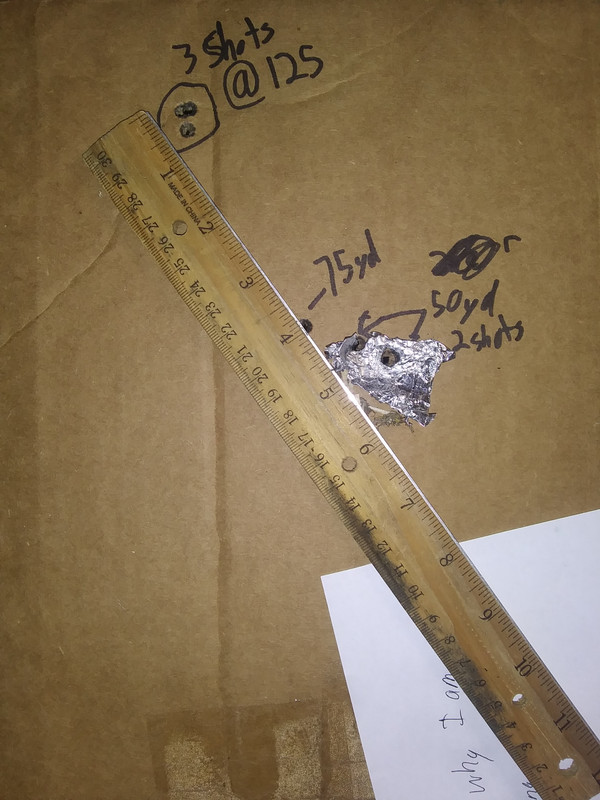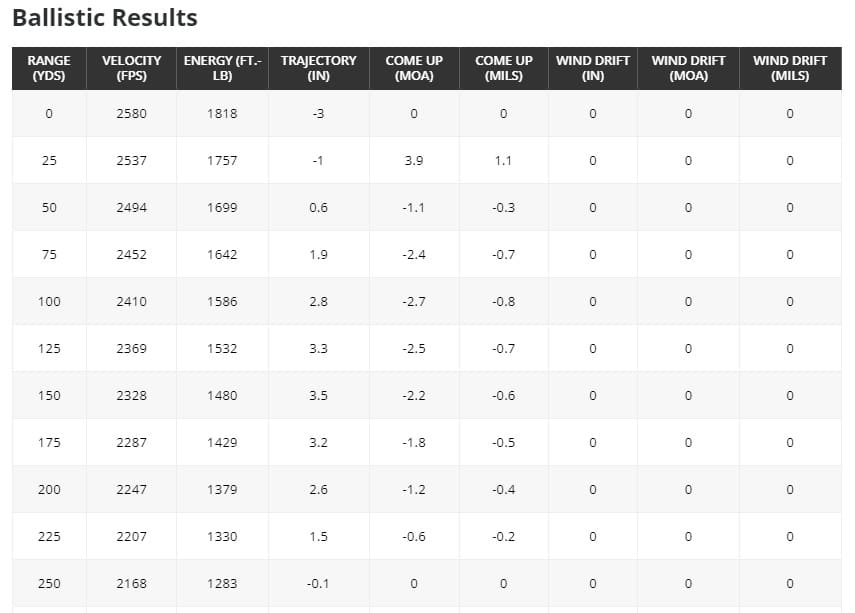Thermal scopes tend to sit 2.5" or higher above bore. My Super Yoter with a riser sits over 3.3" above bore because I have it on a 5/8 riser. The description and zero presented seems drastic but isn't as drastic as one may think. People have grown accustomed to things with a glass scope. Starting at 1.5" over bore vs 3" over bore makes a big difference.
I took the data you supplied and put in a 6.5 grendel 123 gr hornady load in the hornady ballistics calculator. You were a little high at 50. I realize it is close but the closer you zero, the more particular this becomes. You are also a little left of target so that continues to be amplified as the distance grows. Check out the chart below.
If you measure straight down as to the elevation change, it looks like it might be around 4". This chart shows with a 40 yard zero (slightly high at 50) and 3" above bore scope, this isn't very far off. It is showing 3.3" at 125 and 3.5" at 150, so some slight differences and you could be right there.
The advice many have given which is zero at 100 is very wise. At 50, due to your height above bore, you bullet is rising way too fast and high through the majority of the kill area.
Here is another common issue that I have gotten myself into and am changing over time. Most night hunters unless they live in heavily wooded areas probably kill their coyotes between 75-150 yards. However, many people will sight their thermals in for 2"+ above at 100 yards. They do this because from a ballistics standpoint they want their PBR to extend to 275 or 300 yards. That is fine, but what you are actually doing is shooting way too high for most of your coyotes through the 75-150 range.
In the example shown above, the bullet is 2 to 3.5" high through the majority of the shots. To me, it doesn't make sense to be shooting that high for the rare 300 yard shot. I have actually brought my POI from 1" at 100 down to around .5" high at 100 for my 22-250 after I elevated my scope another 5/8"





